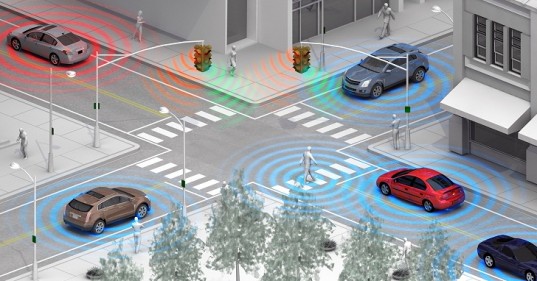
General Motors has announced that the company is developing a new pedestrian detection system that relies on Wi-Fi Direct technology to ‘see’ pedestrians and bicyclists on congested streets or in poor visibility. Wi-Fi Direct is a the peer-to-peer wireless system that allows smartphones to communicate directly with each other rather than through a shared access point like a cell phonetower, which speeds up the amount of time needed to acquire location information. In GM’s application, the technology would be used to quickly alert drivers to change their course when their view of a pedestrian or cyclist is otherwise blocked.

GM’s researchers have determined Wi-Fi Direct can be integrated with other available sensor-based object detection and driver alert systems to help detect pedestrians and cyclists carrying smartphones equipped with Wi-Fi Direct. “This new wireless capability could warn drivers about pedestrians who might be stepping into the roadway from behind a parked vehicle, or bicyclists who are riding in the car’s blind spot,” said Nady Boules, GM Global R&D director of the Electrical and Control Systems Research Lab.
The automaker also is looking to develop an app for smartphones that can be downloaded by frequent road users such as a “bike messenger” or “construction worker” that will help Wi-Fi Direct-equipped vehicles identify them. “Wi-Fi Direct’s fast connections offer a distinct advantage in vehicle applications,” said Donald Grimm, GM Global R&D senior researcher of perception and vehicle control systems. “The quicker a vehicle can detect other Wi-Fi Direct users, the greater the potential for collision avoidance.”
As of right now, GM’s researchers continue to discuss the possibilities for production, but no time frame has been set. “As we move toward becoming a more connected society, having a self-aware connected car will be increasingly important,” said Thilo Koslowski, vice president of automotiveindustry analysis at Gartner Inc. Not only can Wi-Fi Direct help vehicles seamlessly communicate with other consumer devices, it can also augment vehicle-to-infrastructure
communications as
well, which could lead to better traffic management and fewer accidents.”




























